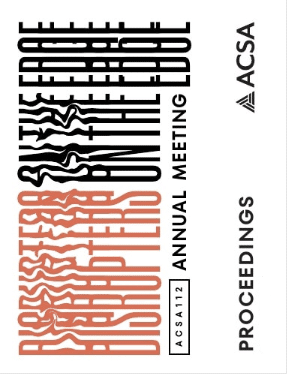Author(s): Sony Devabhaktuni
The paper tells the story of the interrupted construction of a new state capital in southern India and the use of a design method — architectural scenario planning (A-SP) – to envision its possible futures. In Amaravati, economic and political disruptions turned a new city project into a contemporary ruin. Begun in 2016, construction on the capital stopped after three years, leaving infrastructures scattered across 217 km2 of appropriated land. Today, the site remains in legal limbo, with foundations, flooded pits and unoccupied concrete towers teeming with plant and animal life in an unplanned rewilding that has deprived 100,000 people of their livelihoods. Scenario planning was conceived at Shell Oil in the 1960s and has since developed in diverse settings. At the method’s heart is the articulation of multiple plausible scenarios dependent on carefully chosen parameters. While competitions and CFPs both can promote diverse visions for a site, they nevertheless are not based on systematically derived, opposed assumptions or viewed outside the framework of an optimal solution. We re-deploy architecture’s capacities beyond a traditional realm of services by using A-SP to envision potential futures for Amaravati. A 2 x 2 planning matrix comprising the either/or variables of land-use and infrastructural build-out structures our exercise. This matrix produces four-scenarios for a 20-year time frame — “Village Islands,” “Networked Farming,” “Suburban Satellites,” and “Horizontal City” – each back-cast at 5 year intervals. Plans, sections and diagrams at multiple scales comprise visual narratives for each of the four scenarios, leveraging architecture’s capacity for graphic description. This graphic aspect distinguishes A-SP from the written accounts and quantitative data that describe futures in traditional exercises. Although there continue to be developments with graphic spatial interfaces at the GIS and urban scale in recent scenario planning exercises, we argue that architecture’s trans-scalar tools and material engagement allow it to more convincingly envision alternatives.
https://doi.org/10.35483/ACSA.AM.112.111
Volume Editors
Germane Barnes & Blair Satterfield
ISBN
978-1-944214-45-6

 Study Architecture
Study Architecture  ProPEL
ProPEL 
